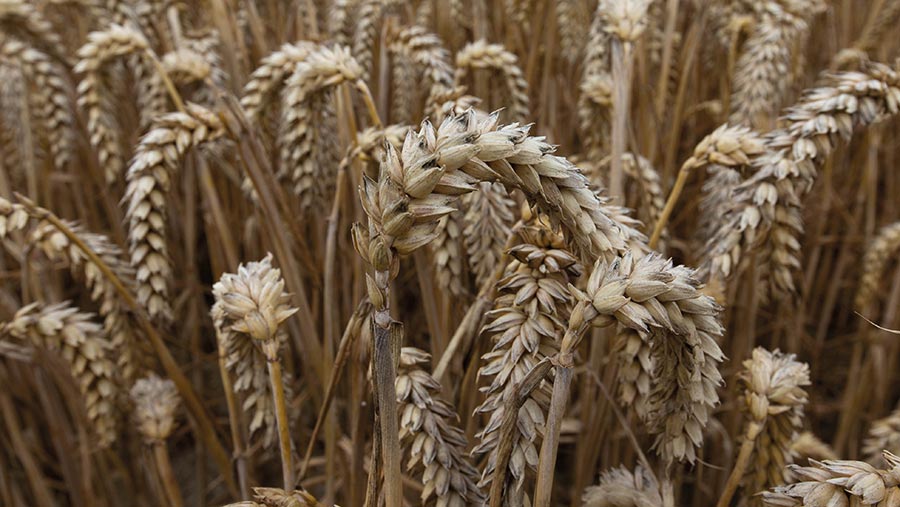Scots growers benefit from one of the hottest summers ever
 © Tim Scrivener
© Tim Scrivener Farmers in Scotland and Northern Ireland have experienced one of the hottest summers on record, according to Met Office data.
Statistics show that Northern Ireland saw a record peak of 31.3C at Castlederg, Tyrone, and a 15.1C average – the third highest on record.
And Scotland recorded its fourth-highest summer average at 15.3C. But local variations meant some of the sunnier regions, north of the border, chalked up the highest average summer figure since records began in 1884.
See also: How to use digital rainfall gauges and what’s on the market
Averages were bolstered further by higher night-time temperatures. In contrast, the south-east of England had a relatively dull, wet summer, and these cooler-than-normal figures held back the overall UK average to 15.3C – only the ninth warmest on record.
August was relatively cool across the whole of the UK, with a day-time high of 27C at Tyndrum on 25 August – the lowest August peak since 2010.
Grain quality boost
The weather gave a boost to some farmers in Scotland, such as Perthshire-based arable grower Adrian Ivory, who completed his harvest at Strathisla Farms by the first days of September for only the second time in his career.
“We have had an English summer. It has been very dry and our dryer hasn’t had to work very hard at all,” he said.
Cereal crops at Strathisla had come off the combine at 16% moisture, compared with a normal minimum of 18-19%. As a result, fuel use is down by 60-70%, Mr Ivory reported.
However, while costs have been down, the dry weather has held back yields. Although winter barley was 0.5t/acre up at 3.5t/acre, spring barley was down 0.5t/acre at 2.3t/acre and spring wheat down 0.25t/acre at 3.5t/acre.
But quality is good, with wheat bushel weights predominantly at about 75kg/hl, he said.
‘Outstanding’ yield
Further north, grower Jack Parsons said conditions at Mertoun Estate Farm, near Kelso, had been the best for 20 years. Mr Parsons said maximum wheat yields had been outstanding for the area at almost 5t/acre, with an average across the farm of more than 4t/acre.
Bushel weights in kg/l were in the high 70s and moisture contents as low as 15-16%, a level he described as “almost unheard of” in the region.
Northern Ireland grower Charles Davidson painted a similarly positive picture from his combine in fields near Newtownards, County Down. Rainfall in August was just 6.5mm compared with more than 100mm for the same month in 2020.
“A very hot spell came at exactly the right time for us and both yields and quality have been good,” Mr Davidson said. Wheat yields have hit 5t/acre, while spring barley reached 3t/acre.
On quality, Mr Davidson said it was normally a challenge to get wheat inside spec on the farm. But bushel weights had been about 74 kg/hl – well inside requirements.
Rainfall varies massively
Seasonal rainfall norms for the UK were also turned on their head with dry conditions in the north and west taking the average down to 75% of the usual 181mm summer figure.
But while the north was dry, the south-eastern counties saw rainfall figures range between 140% and 200% of normal levels.
Mark McCarthy, the Met Office’s head of National Climate Information Centre, said the summer would be remembered very differently depending on where people lived.
“There have been several notable weather events through the summer, including a new temperature record for Northern Ireland, and Storm Evert which brought strong winds and heavy rain across England and Wales, plus extreme rainfall in the South East,” Dr McCarthy said.
NFU Scotland launches harvest survey
NFU Scotland (NFUS) has called on farmers to complete its 2021 harvest survey to help provide the union with facts and figures during policy discussions.
Combinable crops committee chairman Willie Thomson stressed the importance of the survey.
“We need to know what is going on across Scotland. Otherwise we rely on data from the major cereal-growing areas of the UK, which doesn’t always represent our members’ businesses,” Mr Thomson said.
The figures provided will also be used to add weight to the NFU’s and AHDB’s harvest forecasts and are shared with Scottish and UK governments to provide the most accurate harvest forecasts.
The union’s crops policy manager, David Michie, added that although cereal growers may have benefited from a headline-grabbing summer, livestock units were facing lower winter feed levels.
“The hot, dry summer in the West has forced some farm businesses to start feeding this year’s silage, which could make grain availability important this winter.
“The information provided by the survey will be incredibly valuable to our regional and wider policy team,” Mr Michie said.
NFUS members who complete the survey before the 26 September deadline will have the chance to win a bottle of whisky.
The NFUS Scotland 2021 Harvest survey can be completed online.
Guidance on completing the survey is available on the NFUS website.
